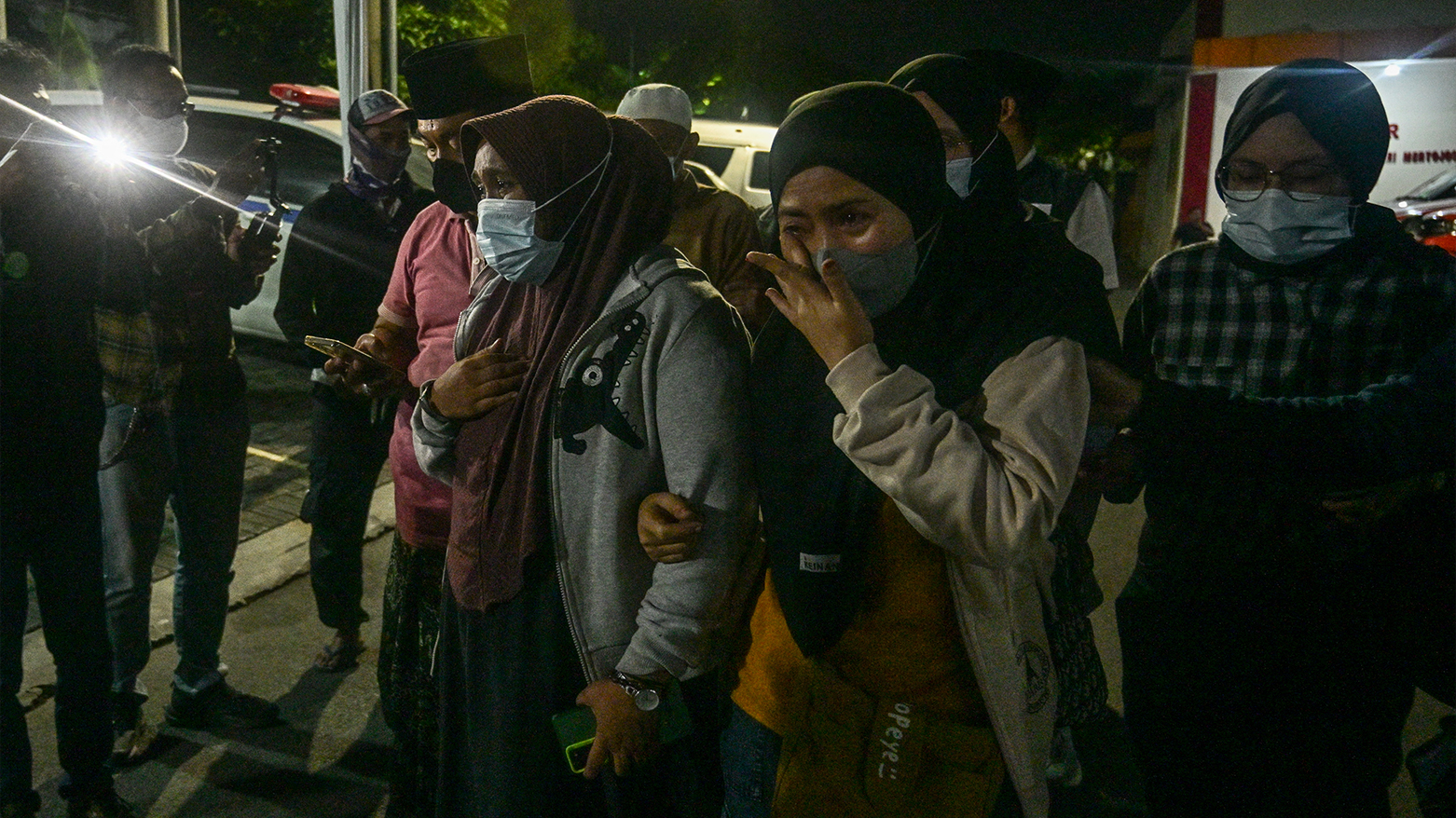Indonesia's School Collapse: 54 Bodies Recovered, Grim Search Continues
The death toll from the Sidoarjo boarding school collapse in Indonesia has risen to 54, with 49 complete bodies recovered and the search continuing.

ERBIL (Kurdistan24) - In a grim and heartbreaking update that has extinguished the last vestiges of hope for a miraculous rescue, the National Search and Rescue Agency (Basarnas) of Indonesia announced on Monday that the death toll from the catastrophic collapse of the Al Khoziny Islamic Boarding School has risen to 54.
On the eighth day of a grueling and emotionally taxing search and rescue operation, officials confirmed that the mission has transitioned from a race to save lives to the solemn and difficult task of recovering the bodies of the victims from the tangled wreckage of concrete and steel that was once a place of prayer and study.
The announcement, delivered by Basarnas Operations Director Yudhi Bramantyo, marks a devastating conclusion to a tragedy that has gripped the nation and once again cast a harsh and unforgiving light on the persistent issue of construction safety in the country.
The multi-story building in Sidoarjo, East Java, collapsed with terrifying suddenness on the afternoon of Monday, September 29, 2025. Hundreds of students were gathered in the ground-floor prayer room for afternoon prayers when the structure gave way, burying them under tons of debris.
The East Java Basarnas office received the first report of the disaster at approximately 3:35 p.m. local time, just as a day of concrete work on the building was concluding, a detail that will undoubtedly be a key focus of the eventual investigation into the cause of the collapse.
In the immediate aftermath, a massive and frantic search and rescue operation was launched, as anxious families crowded the disaster site, holding a painful vigil while hundreds of personnel worked in round-the-clock shifts.
As reported by Agence France-Presse (AFP) and Kurdistan24 in the early days of the crisis, the initial numbers painted a chaotic but still hopeful picture. The National Search and Rescue Agency head, Mohammad Syafii, had reported a total of 102 victims, consisting of 99 survivors and three initial fatalities, with rescuers working with "extreme urgency" to save the lives of an estimated 38 people still believed to be trapped.
However, as the days wore on, that initial hope began to fade. The complex and dangerous nature of the recovery effort, with parts of the structure remaining unstable and at risk of further collapse, slowed the progress of the joint SAR team, which includes personnel from the Indonesian Defense Forces, the National Police, and specialized technical teams. The turning point in the mission's focus came late last week.
On Thursday, October 2, the National Disaster Mitigation Agency (BNPB) deployed heavy equipment to the site to assist in the evacuation. Before this heavy machinery was put to use, the BNPB conducted a series of three meticulous field assessments between Wednesday and Thursday, using advanced technology to detect any signs of life beneath the rubble.
The results of these assessments were conclusive and heartbreaking. Based on the data, Basarnas officially concluded that no survivors remained among the trapped victims, a declaration that shifted the entire focus of the operation.
In his press conference on Monday, Basarnas Operations Director Yudhi Bramantyo provided a somber and detailed update on the progress of the recovery. "The latest update was at 3:34 a.m. when we found one more body, bringing the total to 54, including five body parts," he stated, as reported by the Indonesian national news agency, ANTARA.
"This means the number of complete bodies recovered is 49." This grim and methodical accounting underscores the horrific nature of the collapse and the immense challenge faced by the recovery teams.
Bramantyo confirmed that the joint SAR team is now focusing its efforts on the south side of the collapsed building, an area where mapping by officers has indicated that at least four more victims are still believed to be trapped—three at the front and one at the rear of the structure.
Despite the grim nature of the task, the teams remain dedicated to completing their mission and providing a measure of closure to the grieving families. "We hope to finish today, as we are still working towards that target," Bramantyo noted. He emphasized that the operation continues to be conducted with the utmost care and in close coordination with all involved agencies to ensure the safety of the recovery personnel.
The tragedy at the Al Khoziny Islamic Boarding School is a devastating event in its own right, but it is also part of a larger, deeply troubling pattern in Indonesia. The country has long been plagued by concerns over lax construction standards and a lack of rigorous enforcement of safety regulations. As noted in previous reports, this is not the first time such a disaster has struck the nation. Just last month, a similar incident occurred when at least three people were killed and dozens were injured after a building that was hosting a prayer recital collapsed in West Java.
These repeated tragedies serve as a painful and urgent reminder of the need for systemic reform in the country's construction sector to prevent future loss of life in a nation that is already frequently beset by a host of natural disasters. As the recovery teams in Sidoarjo continue their solemn work, a community mourns, and a nation is once again forced to confront the deadly consequences of its own man-made vulnerabilities.
